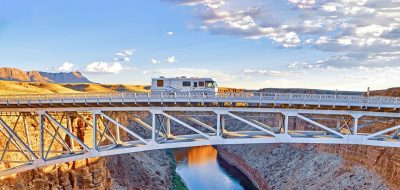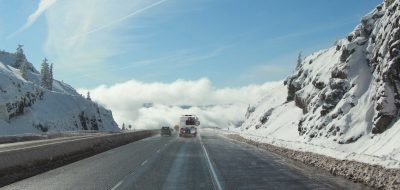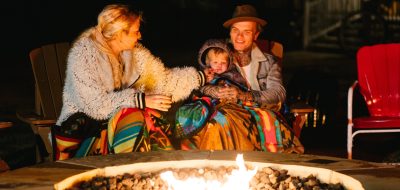The lights! The glitz! The shine!

Sculpted, chiseled, and twisted red rock formations more dramatic than most others we have seen dominate the park’s 42,000 acres. © Rex Vogel, all rights reserved
From the bizarre to the beautiful, Las Vegas has it all: New York, NY, The Venetian, Caesars Palace, and Paris—and the Bellagio water fountain show.
When the neon of Vegas becomes too much, head out to Valley of Fire, Nevada’s first state park, so designated in 1935. With its blood-red sandstone cliffs and weird rock formations, there’s an other-worldly feeling here.
Valley of Fire State Park is 55 miles—and a few light-years—northeast of Las Vegas via Interstate 15 and on exit 75.
Sculpted, chiseled, and twisted red rock formations more dramatic than most others we have seen dominate the park’s 42,000 acres. We felt as though we had been transported to the alien surface another planet.
The Valley of Fire derives its name from red sandstone formations, formed from great shifting sand dunes during the age of dinosaurs, 150 million years ago. Complex uplifting and faulting of the region followed by extensive erosion created the present landscape.
Popular activities include camping, picnicking, photography, hiking among the intriguing rock formations, and soaking in the fascinating story of the area’s geological evolution.
While it is possible to enjoy the park just by driving through, it is by getting out of your vehicle and walking the trails that you really experience the magic and the mystery that is Valley of Fire.

The Valley of Fire derives its name from red sandstone formations, formed from great shifting sand dunes during the age of dinosaurs, 150 million years ago. © Rex Vogel, all rights reserved
Many intriguing hikes are available to visitors. Inquire at the visitor center for suggestions on day hikes of varying length and terrain.
Winters are mild with temperatures ranging from below freezing to 65 degrees. Daily summer highs usually exceed 100 degrees and may reach 120 degrees. Average annual rainfall is four inches. Spring and fall are the preferred seasons for visiting making the Valley of Fire an ideal stopover for snowbirds as head south to their winter roost or on the return trip to their northern home.
Located near the middle of the park the visitor center offers extensive interpretive displays and exhibits on the geology, ecology, prehistory, and history of the park. An orientation film and well-stocked gift shop are also available. Check the schedule or the park’s Web site for ranger-led activities. The visitor center is open daily from 8:30 a.m. to 4:30 p.m. The rest of the park does not close.
There are two campgrounds with a combined total of 72 units. All campsites are first-come, first-serve. Campsites are equipped with shaded tables, grills, water, and restrooms. A dump station and showers are available. RV sites with power and water hookups are now available.
Park features include Fire Canyon/Silica Dome, Rainbow Vista, White Domes, and Beehives.
Fire Canyon/Silica Dome offers an excellent view of the deep red sandstone of Fire Canyon and the unique geological features of Silica Dome. Powerful forces within the earth caused thousands of feet of surface rock to fold, break, and in some areas push several miles from their original location.

Fire Canyon/Silica Dome offers an excellent view of the deep red sandstone of Fire Canyon and the unique geological features of Silica Dome. © Rex Vogel, all rights reserved
The canyons, domes, towers, ridges, and valleys of Rainbow Vista were carved from sand deposited 150 million years ago, during the time when the dinosaurs walked the earth.
Here the road reaches the top of a low ridge revealing a vast area of multicolored rocks stretching for many miles northwards, rather different than the dark red cliffs found further south.
White Domes are sandstone formations with brilliant contrasting colors, picnic area, and a one-mile loop trail that combines sweeping desert vistas, a slot canyon, colors galore, windows, caves, and a historic movie site.
The Beehives are unusual sandstone formations weathered by the eroding forces of wind and water. They an excellent representation of geologic cross bedding, grooved lines going in different directions. The layers or beds represent different layers of silt that were deposited at different times. The beds indicate the angle of the wind or water was moving at the time the material was deposited.
Other points of interest include Arch Rock, Atlatl Rock, Petrified Logs, Balanced Rock, Mouse’s Tank, Seven Sisters, and Elephant Rock.
For information about RV parks and campgrounds, check out Good Sam RV Travel Guide and Campground Directory.
Details
Valley of Fire State Park
Elevation: 1,500-3,000 feet
Entrance Fee: $10.00/vehicle
Camping Fee: $20.00/day (includes entrance fee); $30.00/day for RV sites with water and power hook ups
Address: P.O. Box 515, Overton, NV 89040
Phone: (702) 397-2088
Website: parks.nv.gov
Worth Pondering…
Those who dwell among the beauties and mysteries of the earth are never alone or weary of life.
—Rachel Carson
You May Also Like
- RVC Outdoor Destinations Reflags Lake Raystown Resort
- Louisiana Brewery Trail: Parish Brewing Company
- Vintage Trailer Renovated into Mobile Eco-home
- January 2014 RV Manufacturer Recalls
- Elite Firms Team with Airstream to Market Brand
If you enjoy these articles and want to read more on RV travels and lifestyle, visit my website: Vogel Talks RVing.







Tony Jewell
Just come back from the Valley of Fire – a great start to a trip exploring the Southwest – take a look at my blog for some more photos! http://www.dontdrivetodinner.com/2014/08/the-great-southwest-canyon-road-trip.html
Terrymaule Dehn
One feature we really enjoyed when visiting Valley of Fire State Park was the easily accessible petroglyphs in several locations. Some are visible from areas right off the roads and some on the hiking trails. Also, while not in the park, nearby Overton has a wonderful small museum of indigineous culture.